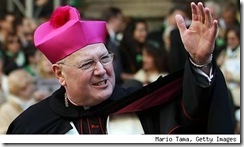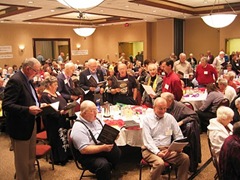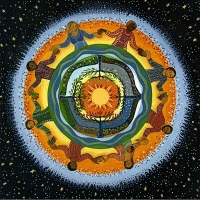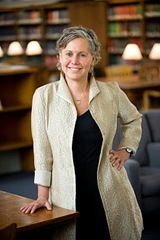
LWF President Bishop Dr Munib A. Younan, assisted by General Secretary Rev. Martin Junge, presents Pope Benedict XVI with a gift from Bethlehem depicting the Last Supper. Second from left is Vatican employee Francesco Cavaliere.
Leaders of the Lutheran World Federation recently met with Pope Benedict XVI at the Vatican. Before considering the report of this latest meeting, here’s the background:
The Lutheran World Federation (LWF) is a global communion of Christian churches in the Lutheran tradition. Founded in 1947 in Lund, Sweden, the LWF now has 145 member churches in 79 countries all over the world representing over 70 million Christians.
The Evangelical Lutheran Church in America (ELCA) is a prominent member of the Federation, and ELCA Presiding Bishop Mark Hanson recently completed a term as President of the LWF. No other Lutheran denomination in the US belongs to LWF. Since the ELCA is often criticized by other Lutherans for its social activism, it is hardly surprising that the ELCA is the only U.S. Lutheran denomination participatory in the LWF. Perusing the LWF website suggests advocacy roles regarding:
- HIV/AIDS
- Climate change
- Illegitimate debt
- Refugee support
- Clean water and sanitation in Asian third world countries
In a November 15th address, current LWF President Dr Munib A. Younan (Bishop of the Evangelical Lutheran Church in Jordan and the Holy Land and the successor to ELCA Bishop Mark Hanson) stated:
We are called to work to eradicate poverty, to be prophetic against injustice, to be bridge builders between South and North and East and West, to strengthen our sisters and brothers who suffer or find discrimination because of their faith, and to be responsible for the integrity of creation.
In response to the impulse toward ecumenism following Vatican II, Roman Catholics and Lutherans representing the LWF engaged in years of theological discussions that culminated in a joint statement on the doctrine of justification in 1999. According to Wikipedia,
The Joint Declaration on the Doctrine of Justification is a document created by and agreed to by the Pontifical Council for Promoting Christian Unity and the Lutheran World Federation in 1999, as a result of extensive ecumenical dialogue, ostensibly resolving the conflict over the nature of justification which was at the root of the Protestant Reformation.
The Churches acknowledged that the excommunications relating to the doctrine of justification set forth by the Council of Trent do not apply to the teachings of the Lutheran churches set forth in the text; likewise, the churches acknowledged that the condemnations set forth in the Lutheran Confessions do not apply to the Catholic teachings on justification set forth in the document. Confessional Lutherans, such as the International Lutheran Council and the Confessional Evangelical Lutheran Conference, reject the Declaration.
On July 18, 2006, members of the World Methodist Council, meeting in Seoul, South Korea, voted unanimously to adopt this document as well.
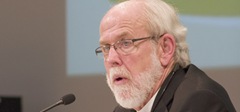 Last summer after his term as LWF President had ended, ELCA Presiding Bishop was asked about the status of ecumenical relations with the Vatican:
Last summer after his term as LWF President had ended, ELCA Presiding Bishop was asked about the status of ecumenical relations with the Vatican:
The president had been asked if he could envisage a day when a Roman Catholic and Lutheran married couple could commune together with the blessing of both churches. It is the lay people of the churches who are driving and sustaining these conversations, he responded, acknowledging the “grassroots ecumenism” that is alive among lay people. While leaders wrestle with difficult theological issues, “lay people of different churches pray together, study together and work together to build just societies. “If Roman Catholics and Lutherans [for example] can feed the hungry together, wouldn’t it be good if they could be fed at the Lord’s Table together?”
Hanson acknowledged that he is unlikely to see all Christian churches communing together in his lifetime, but “if I can contribute to that vision being realized I’ll be very grateful.”
Here is personal, anecdotal evidence of the grass roots ecumenism of which Hanson speaks.
I hail from Upsala, Minnesota, originally a Swedish community that actually had a Ku Klux Klan chapter in the anti-German days of WWI, but the purpose of the chapter was not to repress blacks (there were none) but to keep Catholics out of Upsala. The local Swedes covenanted with each other that they would not sell real estate to Catholic purchasers. Didn’t work.
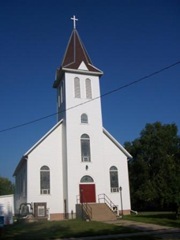 Skip ahead to 1954, and the Roman Catholic church building from nearby St. Francis in largely German-Catholic Stearns County was moved slowly on rollers five miles north to a prominent place on main street in Upsala. A very real and symbolic movement of the German Catholics from the south that corresponded with an influx of Polish Catholics from the east (Bowlus, Sobieski, Little Falls). Grandma Hilma was sure the end times were near.
Skip ahead to 1954, and the Roman Catholic church building from nearby St. Francis in largely German-Catholic Stearns County was moved slowly on rollers five miles north to a prominent place on main street in Upsala. A very real and symbolic movement of the German Catholics from the south that corresponded with an influx of Polish Catholics from the east (Bowlus, Sobieski, Little Falls). Grandma Hilma was sure the end times were near.
But, by the 70’s, the Lutheran pastor, the Roman Catholic priest, and the pastor from the Covenant church joined together in a singing group that appeared at nursing homes and elsewhere and also jointly organized a senior center in Upsala. Local clergy continue to work together in an active ministerial association (the only non-participant is the pastor from the small Missouri Synod (LCMS) congregation in town).
Most recently, in just the last few months, the Roman Catholics replaced that wooden building that had been relocated to Upsala fifty-six years ago, but the new building would be on the same site as the old one. Where to gather for mass during construction? My old congregation, perhaps including the descendants of those who once covenanted to keep the Catholics out of town, offered the use of their facilities and insisted that no rent or remuneration would be accepted.
Construction was completed early in December, and the Catholics at St Mary’s are proudly worshiping in their own building once again. And, the Lutherans from Gethsemane will soon be their guests for a day when the regular Gethsemane Sunday worship service will move to the new Sanctuary of St. Mary’s, to be followed by a brunch hosted by their Catholic friends. Just as the Catholics celebrated their Eucharist in the Lutheran church building, the Lutherans will now celebrate their Eucharist in the Catholic church building. I suspect the folks at both St Mary’s and Gethsemane would be just fine taking the final step and actually celebrating the Eucharist together but for official Roman Catholic policy, but the symbolism of the current events is a striking example of grass roots ecumenism.
This brings us back to the beginning, and the recent meeting between LWF leadership and Pope Benedict XVI. Here’s the report from the LWF website:
The Lutheran World Federation (LWF) President Bishop Dr Munib A. Younan has invited Pope Benedict XVI to work together with the Lutheran communion in realizing an ecumenically accountable commemoration of the 500th anniversary of the beginning of the Protestant Reformation.
“For us there is joy in the liberating power of the gospel proclaimed afresh by the reformers, and we will celebrate that,” said Younan in a message today, when he led a seven-member delegation in a private audience with the Pope. He underlined the need to recognize both the damaging aspects of the Reformation and ecumenical progress.
“But we cannot achieve this ecumenical accountability on our own, without your help. Thus we invite you to work together with us in preparing this anniversary, so that in 2017 we are closer to sharing in the Bread of Life than we are today.”
Secondly, Bishop Younan expressed similar sentiments to those of Bishop Hanson about the continuing inability of Catholics and Lutherans to celebrate the Eucharist together.
In his statement, Younan reiterated the LWF’s commitment to “moving closer toward one another around this Table of the Lord, which Luther saw as the summa evangelii.” The LWF president pointed out that while it was important to “rejoice in each small step which brings us closer together, we do not want to be content with these steps. We remain strong in hope – both for the full visible unity of Christ’s Church and for the Eucharistic communion which is so crucial a manifestation of that unity.”
I studied with the School of Theology at St John’s Abbey and University in the early ‘90’s. Once a week, the resident students hosted a meal for the non-residents followed by a mass. But, a couple of seminarians protested that this was contrary to Catholic doctrine because many of the non-residents were non-Catholics , and the joint mass was discontinued–to the common pain of most of us, Catholic and Protestant alike. In defense of this exclusive policy, one seminarian suggested that when the rest of us accepted the Catholic understanding of the Eucharist, then we would be welcomed. By that standard, I shouldn’t be celebrating communion with most Lutherans, since I’m sure we don’t all share the same understanding; nor is the understanding of the communing children in our congregation likely to be anywhere close to the understanding of the adults.
At the joint meeting, the Pontiff expressed continuing support for ecumenical dialogue without addressing Catholic exclusivity around the communion rail.





